Top 10 Urban Stories (New Who)
In the build-up to The Bells of Saint John, David Selby counts down his top 10 urban stories.
As the Doctor’s companion acts as the audience surrogate; someone they can place their trust in and sympathise with, there has to be a certain likeness between them and us. This is why, in most instances, the companion is from Earth, and usually London. The urban setting is something which has always been a part of Doctor Who; somewhere the companion has to return to face the consequences of leaving with the Doctor, or, to put it another way, seeing the brutal ramifications of abandoning their family. It’s also a chance for the FX team to use a rich, vibrant backdrop – and not require any computer animated visuals at all in doing so. Throughout the classic series there were numerous stories set in the present-day; in the Pertwee era, almost every episode took place on Earth due to the Doctor’s exile. Therefore, I have narrowed my list down to the new series, and picked what I believe are the Top 10, in the build-up to The Bells of Saint John.
Note: These are not necessarily my favourites, but the ones which I have nominated in terms of how they portray modern life/make use of the contemporary environment.
10. Aliens of London/World War Three

9. The Eleventh Hour
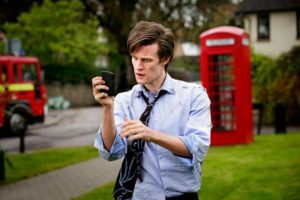 I don’t think I’d be too flippant to suggest that everybody loves The Eleventh Hour. I don’t think you can watch it without beaming, crying out of happiness, or feeling a burning nostalgia, because it’s one of those episodes that stick in your mind. Essentially, it’s not a masterpiece, but in other ways it is, because you can watch it again and again.
I don’t think I’d be too flippant to suggest that everybody loves The Eleventh Hour. I don’t think you can watch it without beaming, crying out of happiness, or feeling a burning nostalgia, because it’s one of those episodes that stick in your mind. Essentially, it’s not a masterpiece, but in other ways it is, because you can watch it again and again.
Whilst it didn’t make use of a famous city, or an illustrious tourist attraction, it did two things that none of the others on this list managed. The first was that it brought Doctor Who to a rural area after a whole era of London-based openers/finales; even making a joke out of the fact that the Doctor wasn’t used to being in such a bucolic place (“Twenty minutes to save the world, and I’ve got a post office – and it’s shut!”). The other is that, somehow, it made such a bleak, unimaginative setting magical. Perhaps it was the night-time shots of the TARDIS landing in Amy’s garden, or Murray Gold’s enchanting score. Whatever it was, though, it worked, and I commend it for that.
8. The Sontaran Stratagem/The Poison Sky
 It’s not the most visually impressive in terms of the backdrop, but it plays with a concept from modern society (the Sat-Nav) and turns it into a deadly weapon. I’m always encouraging stories like this; stories which make you question the environment you’re in, and the potential damage something like ATMOS could do: stories which aren’t so far from the truth.
It’s not the most visually impressive in terms of the backdrop, but it plays with a concept from modern society (the Sat-Nav) and turns it into a deadly weapon. I’m always encouraging stories like this; stories which make you question the environment you’re in, and the potential damage something like ATMOS could do: stories which aren’t so far from the truth.
On top of this, the Sontarans were brought back to their former glory, faithful to the classic design (mind you – what could you change about the Sontarans?), but still effective after all these years. I loved Luke Rattigan’s character, too; whilst he was flawed, and egotistical, he highlighted the issues with being a ‘genius’; he’s a geek, who’s been bullied by ‘normal’ people, and he’s alone in his knowledge, making him isolated, just like the Doctor. Perhaps if you look at this story close enough, you end up questioning how fair our society is to such brilliant minds.
7. Rose
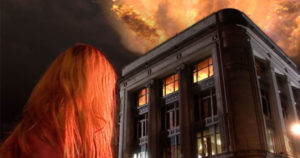 Looking back, this one doesn’t have the best FX, or the most vibrant backdrop compared to other London episodes, but it bridged the new and classic series so I extol it for that. I loved seeing the Nestene brought back; the best choice, perhaps, because of how mannequins have evolved since their last televised appearance. The scenes of the Doctor running through London with Rose are very enchanting, and allowed the audience to connect with the show; bringing the present day into a programme which hitherto felt stuck in the past.
Looking back, this one doesn’t have the best FX, or the most vibrant backdrop compared to other London episodes, but it bridged the new and classic series so I extol it for that. I loved seeing the Nestene brought back; the best choice, perhaps, because of how mannequins have evolved since their last televised appearance. The scenes of the Doctor running through London with Rose are very enchanting, and allowed the audience to connect with the show; bringing the present day into a programme which hitherto felt stuck in the past.
6. Love and Monsters
 Here I redirect you to G.F. Roberts’ brilliant article, because I feel just as strongly as he does about Love and Monsters. Despite the obvious flaws (the Abzorbaloff and that horrific fate the Doctor sentenced poor Ursula to), it’s a work of genius in its own right.
Here I redirect you to G.F. Roberts’ brilliant article, because I feel just as strongly as he does about Love and Monsters. Despite the obvious flaws (the Abzorbaloff and that horrific fate the Doctor sentenced poor Ursula to), it’s a work of genius in its own right.
Episodes set in the future depict a surreal world, and rightfully, the writers can experiment with new ideas, delving into a diversity of hybrid genres; introducing the supernatural, creating eccentric new aliens with bizarre idiosyncrasies. Episodes set in the past focus (or should focus) on portraying historical events with as much honest accuracy as possible, paying all due respects to the personages concerned. Present-day stories, they’re the real ones, the now ones; the ones you can believe. So, as I mentioned earlier, it’s only fitting that these are the ones where you’re given the truth: what really happens? You can’t believe that a young girl could leave everyone and everything behind and everyone lives happily ever after. This one succeeded in showing how Doctor Who, if it were real, would really be like. It was tragically beautiful because it was so truthful to real life.
5. The Power of Three
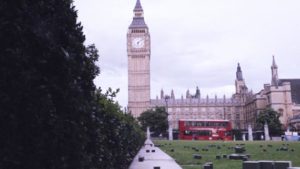 Not an episode which I particularly like; overall, whilst having some good character development, it’s a cluttered mess of unsolved plot-points and undeveloped concepts. But the ‘Slow Invasion’ was a fabulous idea, and one of the few aspects of the episode which actually worked. You got to see all the possible ways people used the Cubes; as decoration, as book-ends, and even throwing them out onto the streets. It was also a chance for the Doctor to move to the ‘companion’ role; basing it on Earth.
Not an episode which I particularly like; overall, whilst having some good character development, it’s a cluttered mess of unsolved plot-points and undeveloped concepts. But the ‘Slow Invasion’ was a fabulous idea, and one of the few aspects of the episode which actually worked. You got to see all the possible ways people used the Cubes; as decoration, as book-ends, and even throwing them out onto the streets. It was also a chance for the Doctor to move to the ‘companion’ role; basing it on Earth.
4. The Lodger
 It’s episodes set on Earth which really highlight how utterly alien the Doctor is; when we’re taking to alien planets, we see peculiar, inhuman races, so comparing someone who’s human in appearance to these makes him seem like one of us. When he’s placed with other humans, though, you start to see quite how different he is to the rest of us. This wasn’t the strongest standalone, but it was hilarious, and showed how out of touch the Doctor is with modern society and human social customs.
It’s episodes set on Earth which really highlight how utterly alien the Doctor is; when we’re taking to alien planets, we see peculiar, inhuman races, so comparing someone who’s human in appearance to these makes him seem like one of us. When he’s placed with other humans, though, you start to see quite how different he is to the rest of us. This wasn’t the strongest standalone, but it was hilarious, and showed how out of touch the Doctor is with modern society and human social customs.
3. The Hungry Earth/Cold Blood
 Whilst Inferno undoubtedly demonstrated a superior handling of this premise, The Hungry Earth/Cold Blood, as well as making use of the dangers of drilling, posed questions about how we’d deal with having to re-populate a species, and the debates between the humans and Silurians were in my opinion the strongest parts of the story; they were suspenseful, clever and thought-provoking. You also had the upsetting truth that an alliance wouldn’t work; the military winning over science, and bargains being made: it was very true to humanity, I think.
Whilst Inferno undoubtedly demonstrated a superior handling of this premise, The Hungry Earth/Cold Blood, as well as making use of the dangers of drilling, posed questions about how we’d deal with having to re-populate a species, and the debates between the humans and Silurians were in my opinion the strongest parts of the story; they were suspenseful, clever and thought-provoking. You also had the upsetting truth that an alliance wouldn’t work; the military winning over science, and bargains being made: it was very true to humanity, I think.
2. The Lazarus Experiment
 “Some people live more in twenty years than others do in eighty. It’s not the time that matters, it’s the person.”
“Some people live more in twenty years than others do in eighty. It’s not the time that matters, it’s the person.”
The Lazarus Experiment tackled the frequently debated subject of resurrection/rebirth/immortality; whatever you want to call it. Of all the episodes listed here, it was by far the most philosophical (particularly observant viewers will remember a T.S. Eliot quotation popping up half way through), and was 45 minutes of sheer perfection. Lazarus’ character is interesting; essentially, he’s a coward; devoting his life to escaping death. It’s proof of humanity’s basest capacity for evil when it concerns their own survival instincts. On top of this, we had the ‘companion back home’ sub-plot, and the Doctor taking the role of judge on Lazarus’ life – something which you may or may not feel he had the right to do.
1. Rise of the Cybermen/The Age of Steel
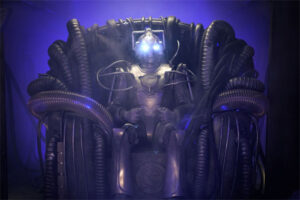
Honourable Mention: Torchwood
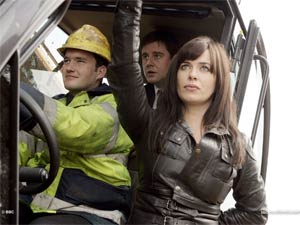
Honourable Mention:The Classics
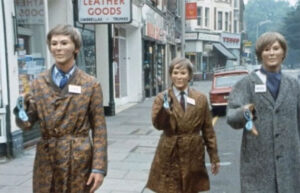
It’s ironic, really, how some of the best episodes of Doctor Who are set in the present day, due to the fact that the basis of the show is that it can go absolutely anywhere and everywhere. Sometimes, though, simplicity is best. Whilst I have my doubts about Moffat’s show-running and storytelling abilities, that doesn’t hinder at all from my anticipation for The Bells of Saint John. Even if the plot/resolution doesn’t satisfy me, I’m sure I’ll love the rich shots of London – something, for me, that is very close to home.








